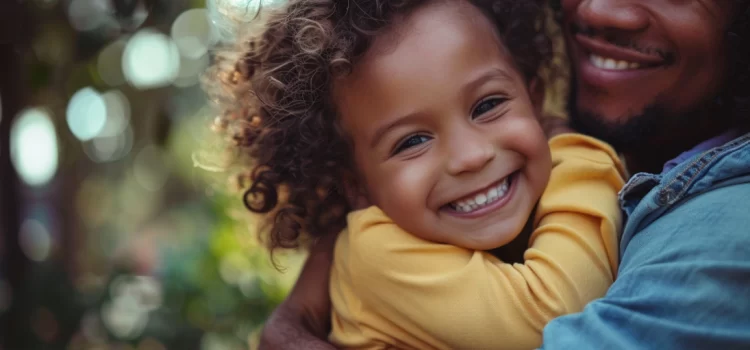
Are you an adoptive parent who wants to know how to bond with your child? How can you work to build trust with an adopted child?
Bonding with an adopted child can be more challenging than bonding with a biological child. The authors of The Connected Child recommend focusing on safety, trust, and sensory-rich activities.
Keep reading for adoptive parenting tips from Purvis, Cross, and Sunshine.
Creating a Nurturing Environment for Adopted Children
In their book The Connected Child, Purvis, Cross, and Sunshine provide a comprehensive guide to creating a stable and nurturing environment that fosters deep connections, particularly for adopted children and those in foster care. Here’s how to bond with your child as an adoptive parent.
Reducing Anxiety and Boosting Safety
One key aspect the authors focus on is reducing the adopted child’s anxiety and enhancing their sense of safety. They emphasize the importance of establishing predictable environments, providing options, and maintaining calming routines. By cultivating a supportive atmosphere and offering problem-solving guidance, parents can strengthen relationships, reliance, and emotional connections.
It’s crucial for parents to consistently show value and love for their child, even when enforcing rules. By developing a clear and empathetic parental presence, caregivers can transform into a secure sanctuary and a supportive partner, ready to respond to the concerns of the child.
(Shortform Note: Suggestions for reducing anxiety and boosting safety through predictability and routines might not fully address the need for children to also learn adaptability and resilience in the face of change and uncertainty.)
Building Trust and Connection
Another essential strategy the authors discuss is building trust and connection through physical touch, eye contact, and mirroring. They advise parents to develop a robust bond by using not only verbal communication but also their physical presence, gestures, and vocal tone to make the child feel connected rather than in conflict.
Noticing a child’s physical cues can be incredibly helpful in identifying their needs and the potential causes of their emotional responses. For example, if a child displays signs of anxiety and retreats in new settings, a parent can pay attention to their non-verbal signals to understand their unease and provide comfort.
Prioritizing Relationships and Engaging in Sensory-Rich Activities
Purvis, Cross, and Sunshine stress the importance of prioritizing relationships over material rewards to strengthen connections. They recommend that parents see themselves as empathetic and supportive guides focused on addressing the needs of the child. By creating a safe atmosphere and developing interpersonal skills, parents can establish profound trust and encourage positive changes.
In addition to focusing on relationships, engaging in activities that stimulate the senses can activate a child’s cognitive functions and foster their growth. The authors highlight the significance of fostering a setting abundant in sensory experiences. They advise establishing a nurturing environment where parents are consistently available and encouraging, creating a secure area for children previously involved in adoption or foster care who may have had adverse encounters with adults.
(Shortform Note: Sensory integration challenges refer to difficulties in processing and responding to sensory information from the environment. Adopted children may face issues with sensory integration, affecting how they perceive and react to stimuli like touch, sound, or movement. These challenges can impact a child’s behavior, emotions, and ability to engage with their surroundings.)
Small gestures can make a big difference in making a child feel safe and heard. For instance, a caregiver might stoop down to meet the child’s gaze while conversing, thereby appearing less threatening and more accessible.
(Shortform Note: Highlighting the significance of building trust through physical touch and eye contact might not fully account for children with sensory processing disorders or those on the autism spectrum, for whom these interactions could be challenging or uncomfortable.)
The Power of Nurturing Caregiving
The approach created by Purvis, Cross, and Sunshine demonstrates the significant impact that nurturing caregiving has on forming strong bonds and enhancing the general well-being of children, especially those who have experienced trauma or instability early in their lives. By providing a loving, stable environment and prioritizing emotional connections, parents and caregivers can help these children heal, grow, and thrive.






